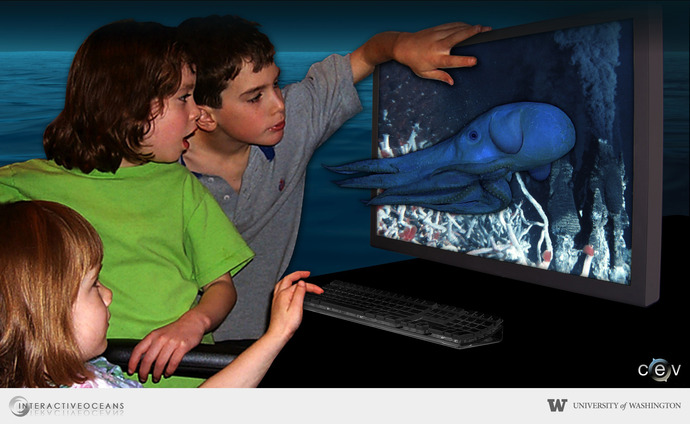Viewing and sharing unparalleled deep seascapes in high-definition video.
The first real-time broadcast of high-definition video from the seafloor via the Internet occurred during the UW-led VISIONS'05 expedition in 2005. This program was funded primarily by the W.M. Keck Foundation and the National Science Foundation. VISIONS'05 was emblematic of the rapid and non-linear changes in both scientific insights and technology-based capabilities that are transforming perceptions and interactions with ocean space. High-definition video is the most capable imaging medium in existence for viewing and sharing the unparalleled deep seascapes festooned with exotic life forms that thrive on volcanic activity while living only centimeters away from 700 °F vent fluids billowing out of the seafloor.
During this program, a reliable 15Mbps IP satellite link was achieved for the high-definition video transmission in addition to communications necessary for a live production. A separate 512Kpbs bi-directional link to support network, internet access, and IP phones was also maintained. From a water depth of 2200 m (~7000 feet), live imagery was streamed from the Remotely Operated Vehicle Jason 2 to the R/V Thompson, the research vessel operated by the University of Washington.





